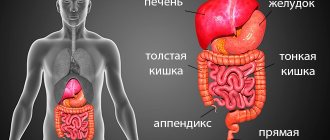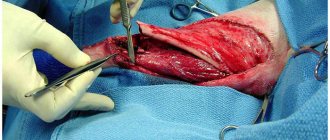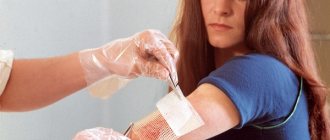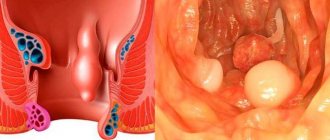A mammologist treats this disease.
Need more information?
Thank you for your request. Your application is accepted. Our specialist will contact you shortly
Need more information?
Did not find an answer to your question?
Leave a request and our specialists will advise you.
Thank you for your request. Your application is accepted. Our specialist will contact you shortly
By clicking on the button, you consent to the processing of your personal data
Thank you for your request. Your application is accepted. Our specialist will contact you shortly
When is fibroadenoma removed?
The opinion about the ability of this neoplasm to resolve on its own is erroneous. Breast fibroadenoma cannot disappear under the influence of any factors. To eliminate it, a set of therapeutic measures or surgical intervention is required.
The decision to perform an operation is made based on the data of a preliminary examination of the patient. At the same time, the doctor analyzes related factors: the woman’s age, the size and intensity of the tumor, the risk of its development into a malignant formation.
The following types of breast fibroadenomas are subject to mandatory removal:
- phylloid and leaf-shaped;
- fast-growing;
- arising from a hereditary predisposition to cancer.
Breast fibroadenoma is removed based on a planned or existing pregnancy. This condition is accompanied by increased production of estrogens, which accelerate tumor growth. Ignoring the pathology can cause the development of purulent mastitis or loss of the ability to breastfeed.
Methods of treating neoplasms
The method of treating a tumor is to remove it surgically. Indications for the operation are:
- Rapid growth and suspicion of degeneration of a benign neoplasm into sarcoma.
- Pregnancy planning.
- The tumor size is more than 2 cm.
- The pathology belongs to the phylloid (leaf-shaped) type.
Surgical intervention can be carried out in the following ways:
- Enucleation. It is used when the tumor is small and there is no suspicion of its malignant nature. It is removed using a small incision in the gland tissue.
- Vacuum aspiration biopsy (mammotomy). Combines both diagnostic and therapeutic methods. Using a special medical instrument, a fibroadenoma is punctured and then excised.
- Sectoral resection. This method is the main one in the Scandinavian Health Center. The tumor is surgically removed along with an area of nearby healthy tissue, since it is impossible to determine the exact boundaries of the pathology.
Surgery
In surgical practice, various tumor removal techniques are used. The choice of the optimal method for each specific case is carried out on the basis of data on the size and location of the tumor, the condition and age of the patient. This or that technique is aimed at removing fibroadenomas of a certain type: medium-sized or larger, single or multiple, characterized by intensive development.
A frequently used method of eliminating pathology is the desquamation method. The manipulation consists of making a small incision and excision of the tumor under local anesthesia. The procedure causes minimal trauma to the skin and does not lead to the woman losing her ability to breastfeed.
If an oncological tendency of the body is detected during histological examination, sectoral resection of the tumor is performed. In this case, along with the formation, part of the surrounding integument is removed. Manipulation often leads to a violation of the proportions of the breast, and therefore you should consult with your doctor in advance about the possibility of mammoplasty.
A radical way to remove breast fibroadenoma is total resection. This method is rarely used to eliminate benign formations. Its use is justified in the case of multiple large tumors, characterized by intensive development and a tendency to develop into malignant pathologies. A total resection is an operation to remove the breast, after which plastic surgery is required.
After removal
After the operation, cosmetic stitches are applied. The rehabilitation period is 1-1.5 weeks. In 20% of cases, tumor recurrence occurs. With the phylloid form - only in 10% of cases. Those women who blame a previous operation for a relapse are mistaken. There is no connection with surgery for relapse. Sometimes complications may occur in the form of suppuration and fever. Antibacterial therapy is carried out. After surgery, physical activity is not indicated. Hormone therapy is mandatory.
The most dangerous fibroadenoma is in women over 40 years old who are faced with the problem of menopause. In addition, the danger arises for nursing mothers, because all sorts of complications can arise in the form of blockage of the ducts and lactostasis.
For leaf-shaped fibroadenomas, total breast resection is used. In this case, the difference from cancer surgery is that in these situations the lymph nodes are not removed, which means there is no need to treat lymphostasis. The postoperative period in such patients most often goes smoothly. The leaf-shaped form is dangerous because it may not develop into cancer, but it often develops into sarcoma. Some women don’t want to go under the knife until the last minute. Conservative treatment in these cases can be carried out, but for only 6 months and if the tumor size is less than 1 cm. If during this period there are no positive dynamics, referral for surgery is mandatory.
Minimally invasive removal methods
A universal method is laser removal of fibroadenoma. This popular, minimally invasive technique involves making a small incision on the surface of the breast, inserting a device into the cavity, and exposing the surface of the fibroadenoma to a powerful beam of light energy, which prevents its cells from further development. By monitoring the process using ultrasound, the doctor removes only pathological areas.
The advantages of the laser tumor removal technique are: painlessness, quick rehabilitation period and minimal risk of complications. After 2 months, the treated area is covered with healthy tissue. The only noticeable result of the intervention is a thin, pale scar.
Another method for removing breast fibroadenoma is cryodestruction. This manipulation takes no more than 30 minutes, after which only a thin white scar remains on the surface. The procedure is aimed at “freezing” the tumor by exposure to liquid nitrogen.
Cryodestruction minimally injures breast tissue, quickly and effectively eliminates affected areas without affecting healthy cells. This method of tumor removal rarely leads to side effects and does not require a long recovery period. Having resorted to this procedure, the patient can return to normal activities within a day.
The list of popular methods for removing fibroadenoma includes the high-frequency method. The procedure is performed under local anesthesia. The manipulation consists of making a small incision (up to 7 mm) and inserting an instrument into the cavity to remove the formation. The surgeon, based on ultrasound control data, acts on the affected tissues with a high-frequency flow, after which he easily cuts them off with a surgical knife. The separated breast fibroadenoma is captured and carried outside the internal cavity.
Description
Operation description
The operation is usually performed under general anesthesia. Depending on the shape of the fibroadenoma and its size, as well as the condition of the patient, the appropriate method of its removal is selected.
- Sectoral resection. Performed for significant fibroadenoma. During the operation, the tumor itself and a small part of nearby tissue, about 3 cm, are excised. Then sutures are applied: internal and cosmetic.
- Enucleation. This is a fairly gentle operation for small fibroadenoma. During the operation, a small incision is made through which the tumor itself is removed. Then an internal self-absorbing suture is applied, and a cosmetic suture is applied on top.
- Ablation – laser removal. This is a modern method for removing fibroadenoma of any size. A special laser is inserted into a small incision on the chest, which destroys the tumor at the cellular level.
The operations are carried out under ultrasound control.
On average, the duration of surgery is 3-60 minutes. ъ\
Postoperative period
A hospital stay is only required if resection is performed. In other cases, the patient can leave the scientific and practical surgery center on the same day. The sutures are removed on days 7-10, but the restoration of the gland itself takes 2-6 months. During the recovery period, it is recommended to avoid sports and wear compression garments.
The Scientific and Practical Surgery Center conducts thorough preoperative diagnostics of its patients. The operating rooms and hospital of the surgery center are equipped with modern equipment that allows surgical interventions to be performed using minimally invasive methods, and the postoperative period to be made as comfortable as possible for its patients.
Postoperative regimen
The standard recovery period for the body after surgery does not exceed 7-8 days. For the normal course of rehabilitation and rapid tissue regeneration, the patient is prescribed a set of measures, including rules for caring for the mammary gland and special nutrition.
During the rehabilitation period, it is important to ensure breast rest. It is necessary to wear special underwear, which is not removed even at night. When showering, you should support the operated mammary gland.
In the postoperative period, it is necessary to limit the patient’s exposure to direct sunlight. The aggressive impact of this factor can lead to disruption of the hormonal balance in the body and the development of a pathological process. For the same reason, you should avoid visiting the solarium.
During the rehabilitation period, it is necessary to reduce physical activity and direct all efforts to stabilize the patient’s psychological state. During this period, it is recommended to use decoctions of soothing herbs, walk in the fresh air, and avoid stressful situations. For the speedy recovery and regeneration of the integument, the doctor prescribes the intake of vitamin complexes and the use of special creams.
It is necessary to include the following foods in the diet: fish, radishes, cabbage, carrots, nuts, other vegetables and fruits enriched with vitamin C, E, iodine and protein. It is important to limit fatty foods, premium flour products, and legumes for a short period of time. You should avoid drinking strong tea, coffee, and alcoholic beverages. To stabilize the condition, the patient should drink clean water, green tea, fruit drinks, and smoothies.
Treatment methods for breast fibroadenoma
Treatment methods depend on the size of the tumor, its structure, age, general condition of the patient, as well as other nuances. If there is a small node, specialists may suggest drug treatment. In this case, medications are usually prescribed to help normalize hormonal levels. However, in most cases, tumor removal is required. For a small formation, a laser can be used; if the size of the fibroadenoma is large, specialists resort to excision of the tumor.
Possible complications
Any surgical intervention in the body is accompanied by a violation of the integrity of the integument, which is why the patient may experience a number of negative consequences. A common side effect is feeling thirsty. It occurs several hours after the operation. A rare complication is the development of ulcers and seromas due to infection in the body.
Other possible consequences include:
- breast deformation;
- swelling or redness of the mammary gland and adjacent tissues;
- discomfort when touching the chest.
A normal symptom is the patient experiencing pain in the operated area, which is associated with a violation of tissue integrity. As the skin recovers, the discomfort should disappear. Long-term persistence and increasing intensity of this condition indicates a pathological process.
A common cause of pain is infection in the internal environment, which can be eliminated by taking antibiotics and painkillers. Other sources may include concomitant disorders that become more active after the manipulation. This unpleasant symptom should not be ignored. You must immediately notify your doctor.
Another warning factor is an increase in body temperature. Violation of the sterility requirements of the procedure can cause pathogenic flora to enter the body and develop a disease process. Observation of this symptom requires immediate additional therapy to prevent the development of ulcers and seromas.
The pathological factor is the presence of hematomas and bruises in the area of intervention. This sign may indicate both the characteristics of the patient’s body and errors made by the surgical team. Most often they are associated with a violation of the integrity of one of the capillaries close to the tumor. During the normal course of the rehabilitation period, the hematomas gradually resolve.
To speed up this process, special vitamin complexes and ointments may be prescribed. Extensive damage that does not disappear for a long time requires cleaning and drainage.
Depending on the material used and the surgical technique, scars form on the patient’s chest: from visible scars to almost imperceptible stripes. To achieve the maximum cosmetic effect, the doctor uses special instruments and absorbable components, and applies cosmetic sutures. Depending on the location of the fibroadenoma, an incision is made directly above it or in the area of anatomical folds.
In the first time after surgery, scars may be mistaken by the patient for pathological seals. After tumor removal, the breast should be periodically palpated for timely diagnosis of tumor recurrence. Long-term observation of this symptom requires additional diagnostics and, if necessary, re-therapy.
Despite the fact that fibroadenoma rarely develops into a malignant formation, it is required to remove it in a timely manner. This procedure is one of the safest manipulations. The success of rehabilitation and the patient’s further condition depend on timely surgical intervention and compliance with the rules of the rehabilitation period.
Radiofrequency removal
Its essence is that with the help of special high radio frequencies, a distinction is made between healthy and diseased tissues. Then the tumor is removed step by step. The whole process takes about an hour. The method is used if the tumor is not deep. The good thing about this method is that it also allows you to remove several seals at once. Contraindications are:
- intolerance to radio frequencies, otherwise it is possible either the development of an allergic reaction or complete indifference of the tumor
- presence of pregnancy;
- GW period;
- when the patient takes antibiotics: the effectiveness of radio frequencies decreases or the procedure gets worse;
- during menstruation;
- The patient's age is up to 35 years.
With this method, headaches, nausea may appear after the procedure, pain at the site of treatment in the chest, and short-term fever may occur. Removing fibroadenoma using any method allows you to keep the mammary glands 100% healthy. All methods are considered organ-preserving.
Indications and contraindications
The tumor is removed if it grows during conservative treatment
The laser technique is most often resorted to if recovery has not occurred with the use of conservative measures. This operation is considered innovative, but has special indications and contraindications.
Intervention can be carried out in the following cases:
- the neoplasm is of the phyloid type;
- large tumor size;
- tumor growth is observed;
- pregnancy planning.
If the results of an ultrasound examination or mammography reveal precisely these types of tumors, the patient must be operated on. If this is not done, there is a risk that the neoplasm will transform into sarcoma, a malignant neoplasm.
Contraindications are divided into absolute and relative. The absolute ones include:
- heart disease and chronic pathologies of the lungs, liver, kidneys;
- diabetes mellitus in any form;
- problems with blood clotting.
In the first case, any surgical intervention is contraindicated, since the patient will not tolerate anesthesia.
Relative contraindications include:
- increased body temperature;
- signs of acute respiratory infections, acute respiratory viral infections or skin infections;
- predisposition to collagenosis;
- decreased immunity.
If the patient has one of the listed absolute signs, the operation is postponed until complete recovery.
Wearing a properly fitted bra before and after surgery is essential. Underwear should under no circumstances put pressure on the mammary glands.
Benefits of paid treatment
Paid treatment for breast fibroadenoma in Moscow clinics has the following advantages:
- a staff of experienced mammologists, surgeons and specialists in other medical fields;
- the use of gentle surgical methods, which, if necessary, are accompanied by plastic correction with excellent aesthetic results;
- use of the latest medical equipment;
- comfortable rooms, attentive attitude of the medical staff.
If you need treatment for breast fibroadenoma in one of the Moscow clinics, leave a request on the website or call the hotline. We will advise you on all issues and help you be hospitalized in any medical center in the capital as soon as possible.











